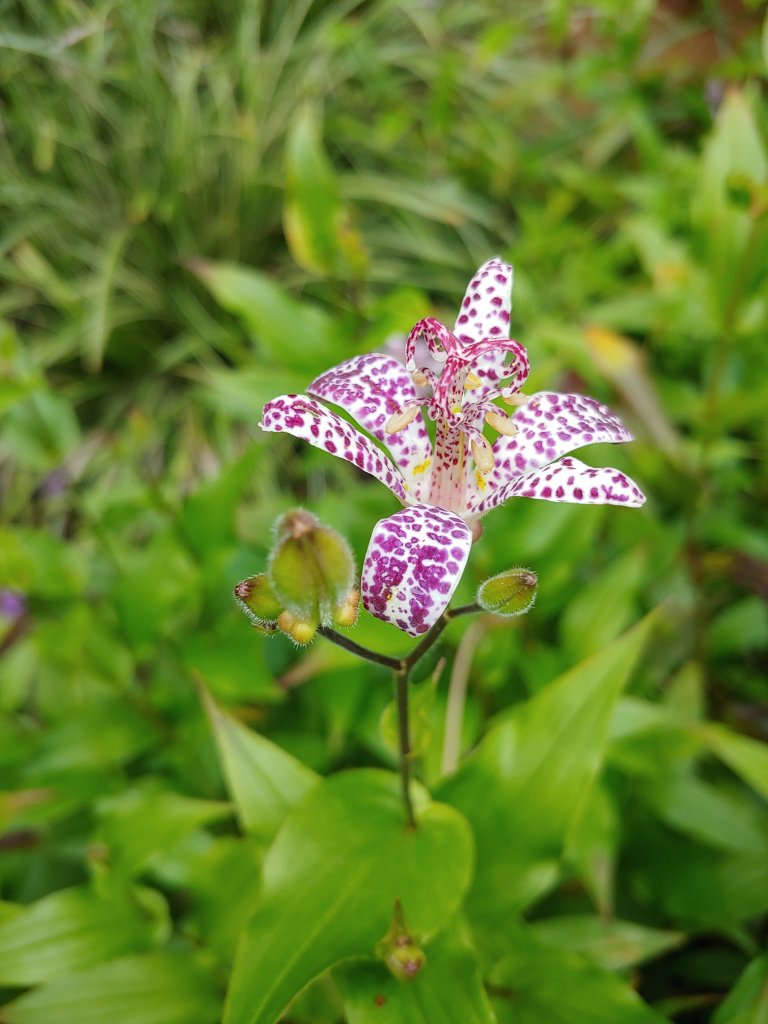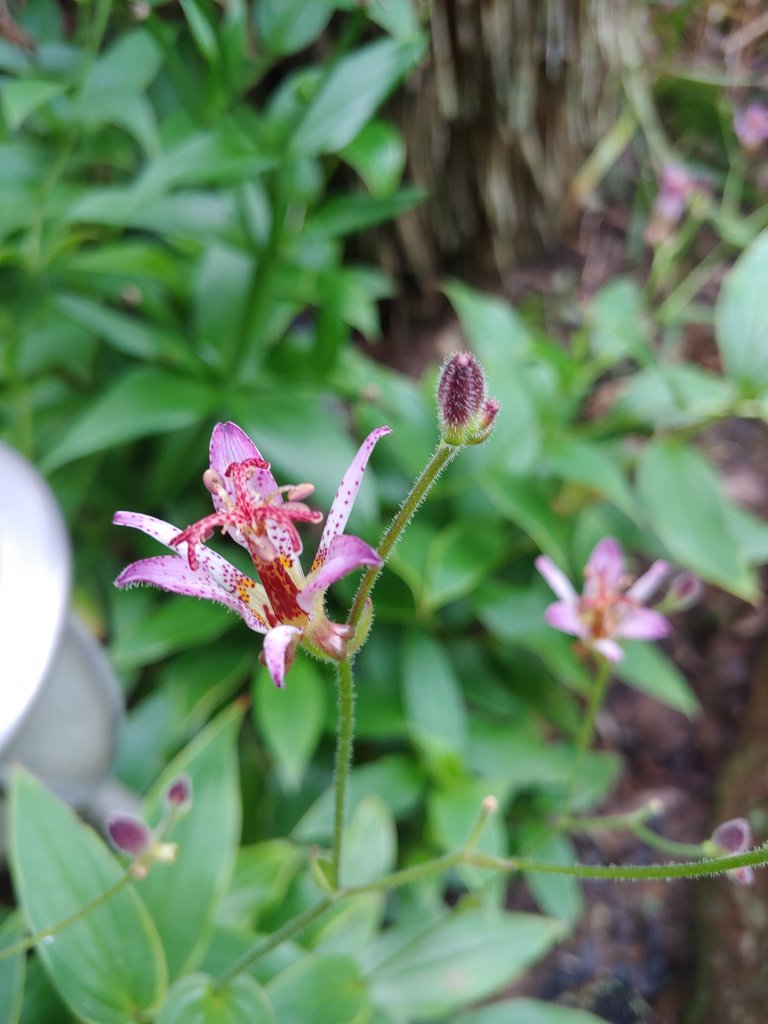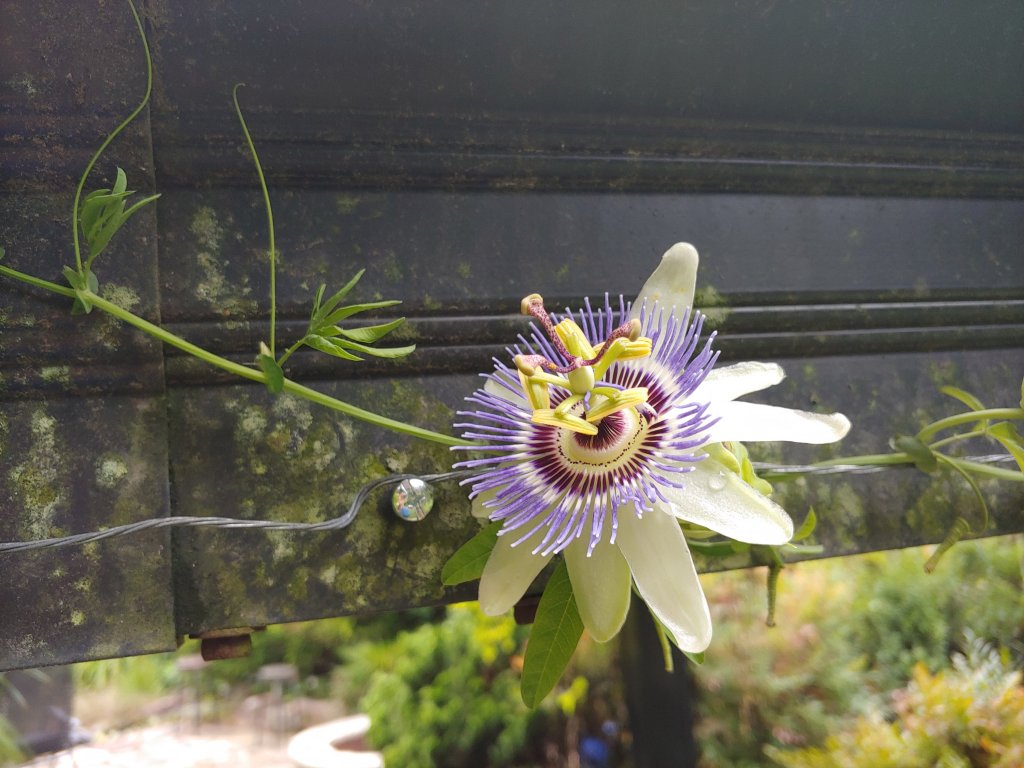Inches of rain have fallen over this past week, so of course I can now cease whining about this summer’s dryness. I will not jump into complaints about the garden’s wetness, at least not yet.

A before and after might reveal stark differences between the stress of summer heat and dryness, and the relief following this substantial rainfall, but the overall impression is a return to green lushness. Yes, there are Ostrich ferns stretched into too much sun with dried tips to fronds, and the same with volunteer Sensitive fern sporelings sprouted into sunny areas. Seedling geraniums have turned to their typical summer worst, but there is little negative to this week’s deluge except of course weed growth that is expected to leap in the next week.

It is now too damp for clover to flourish in the small upper section of lawn in the rear garden. A treacherous area of thin clover, sparse grass, and slick mud was replaced by granite paving and gravel in very early spring. The change has improved footing for this frequent passageway, so I must consider at least some additional pavers sunk into the lawn (clover) to reduce wear and improve traction. I have not yet slipped and fallen with an armload of garden debris, but this is inevitable. I insist on far too many risky, but somewhat calculated behaviors, lifting beyond good sense, climbing without a care, not to mention occasional recklessness with a chainsaw, so I must take simple precautions not to be injured by a slip in the mud.

Some toad lilies (Tricyrtis, above and below) have begun their late summer bloom. I am occasionally disappointed when flowering is delayed into September, I think due to damp summers that encourage growth, not flowering. There will be many more flowers in September and October, and into November if hard frosts arrive late, but I relish the early arrivals.

A year ago I pledged not to add more toad lilies since I often can tell little difference between cultivars. Of course, this pledge was broken, but only because two additions were needed to fill a delivery. I continue to be disappointed by the failure of yellow flowered toad lilies that should not be any more difficult, but I suspect the most ideal spots were already taken, so future plantings will be given the highest priority.

While the yellow flowered, native passionflower vine (Passiflora lutea, above) runs rampant through hydrangeas and the cherry on the backside of the koi pond, a second, less cold hardy passionflower (Passiflora caerulea, below) is flowering, growing along the roofline of the summerhouse. A rooted stem was dug from my son’s overly vigorous vine, potted, and overwintered in the greenhouse. Its growth is held in check by lean potting soil, and it will be cut back and shuttled back to the greenhouse for the winter. Certainly, it would be happier in the ground rather than in a pot, but the marginally cold hardy passionflower would likely perish the first winter.

Though I am often negligent in watering the few plants growing in containers, the passionflower looks sad when dry, so this encourages me to dip the watering can into the koi pond for a fill. Still, the vine clearly appreciates this week of rain.
Is the yellow-flowering plant at the top a ginger?
It’s a canna that is overwintered in the greenhouse. Occasionally, there is a weak surviving canna following a mild winter from ones that I left in the ground, but most are grown in pots or dug and potted for the winter. There’s no room in the shallow end of the koi pond, but when I grew cannas in shallow water they grew huge.
Lol!!! I originally thought “canna”, but then you always seem to have so many different plants or varieties thereof I’ve never heard of before that I just assumed it must’ve been something more exotic than just a canna – lol!
Cannas are a good filler, in particular in the wet area out back that has not grown in yet.